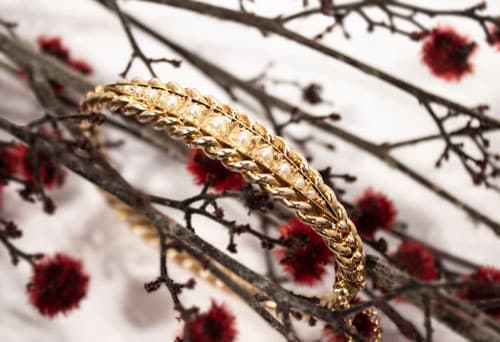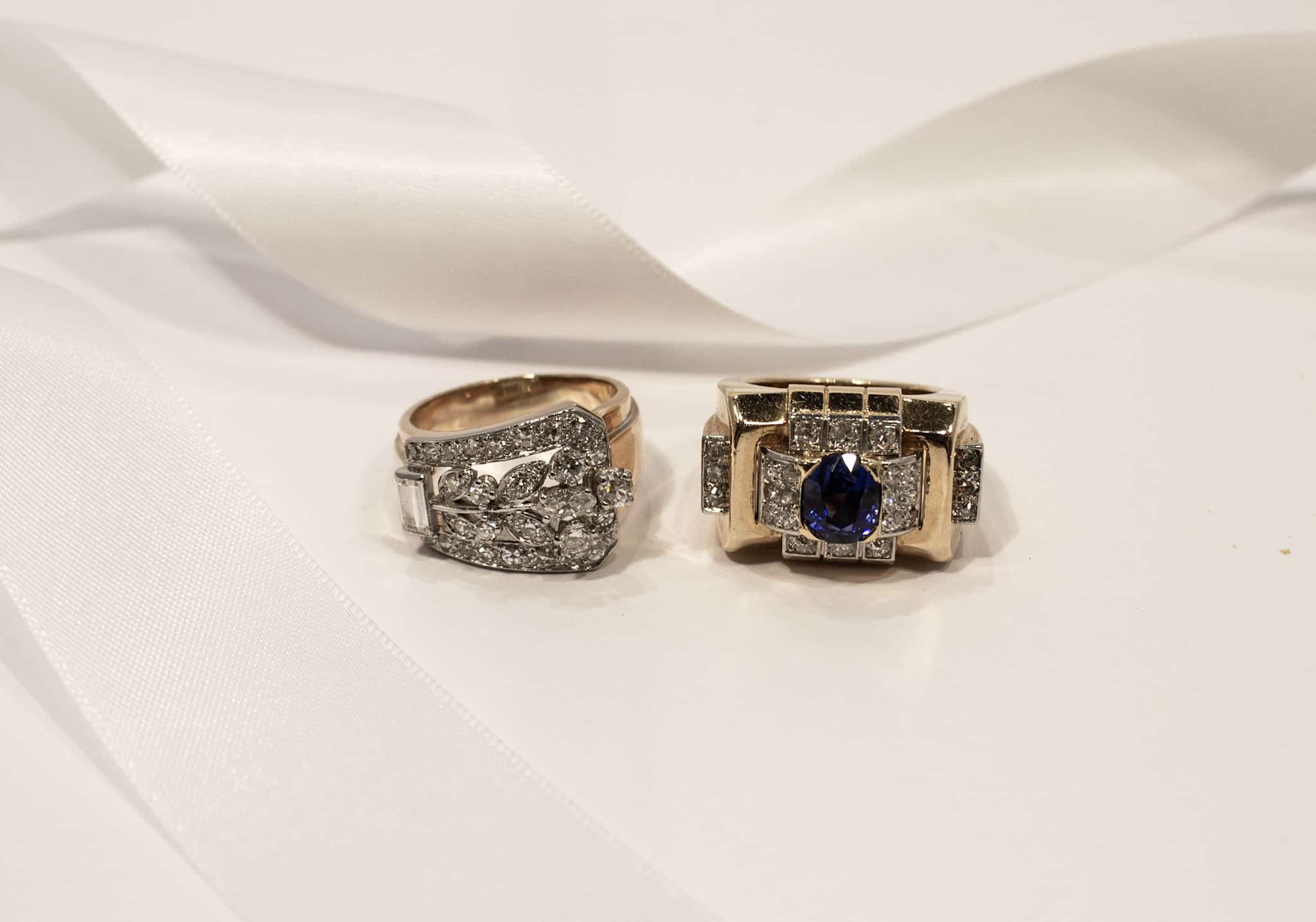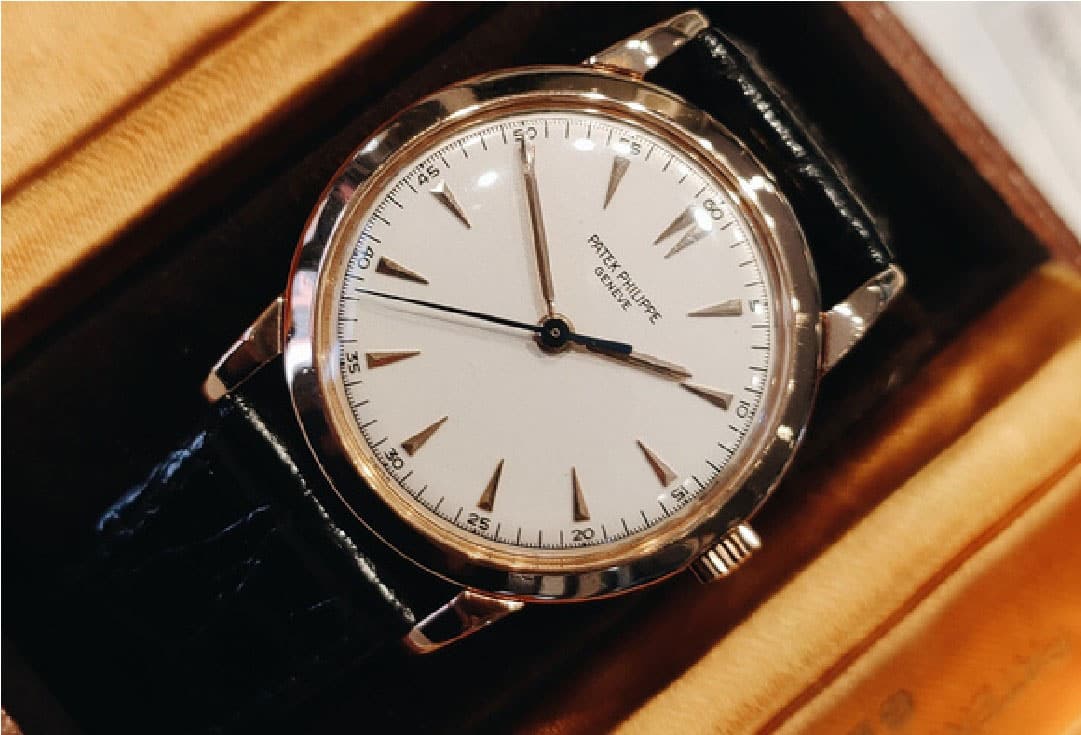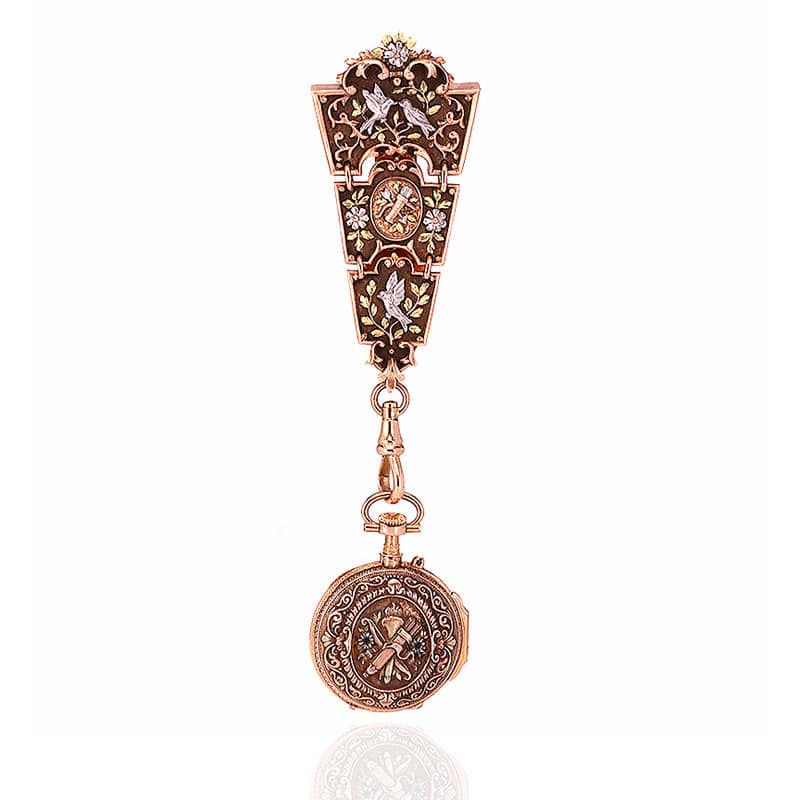
By the 18th century onwards, a pocket watch would be an essential accessory for women and would often be worn attached to a chatelaine or hanging from a waist girdle. Not only were these items functional, but they were also items of adornment, crafted with the same care and elaborate designs as jewellery pieces. 'The main form of attachment of watches for women for most of the 18th century was the equipage' (Source 1). This was an accessory hung from the waist by a large flat hook that would tuck behind the waist fabric of a dress. Equipages consisted of a series of decorated, hinged panels or chains. In the late 18th to early 19th centuries, they were often worn as a set of two; one holding a pocket watch and the other an elongated box which could be used to carry important household objects such as sewing sets (Source 2). The name chatelaine would later be applied to all such devices and would become more elaborate as the 19th century progressed. The name chatelaine did not come into use until 1828, when the French magazine The World of Fashion declared a new fashion accessory 'La Chatelaine' (Source 1).
This pocket watch and watch chatelaine is elaborately decorated with rose, yellow, green gold and platinum. The chatelaine is constructed from three hinged panels with a suspended Albert catch to attach the pocket watch. The chatelaine and the pocket watch case have been elaborately decorated with layered imagery that offer clues into the sentiment behind the piece.
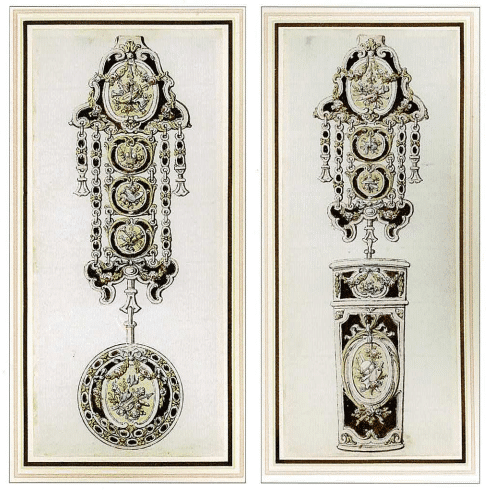
Original hand-coloured 18th century engravings of designs for a matching watch and 'chatelaine' and an equipage. Not signed but attributed to Jean Michel Moreau.
Symbolism:
From the 1770's onwards the movement of Romanticism influenced fashion, design, art, music and literature. This movement gained further momentum in France as a response to The French Revolution, whilst also influencing arts and culture in Britain. The values underpinning the movement were based on the ideals of liberty, equality and fraternity, expressed throughout the revolution. These shared ideals of a society based in freedom, equality and companionship saw an emphasis placed on personal relationships and individual thought. These principles were reflected in jewellery design by a strong use of allegory and sentimentalism.
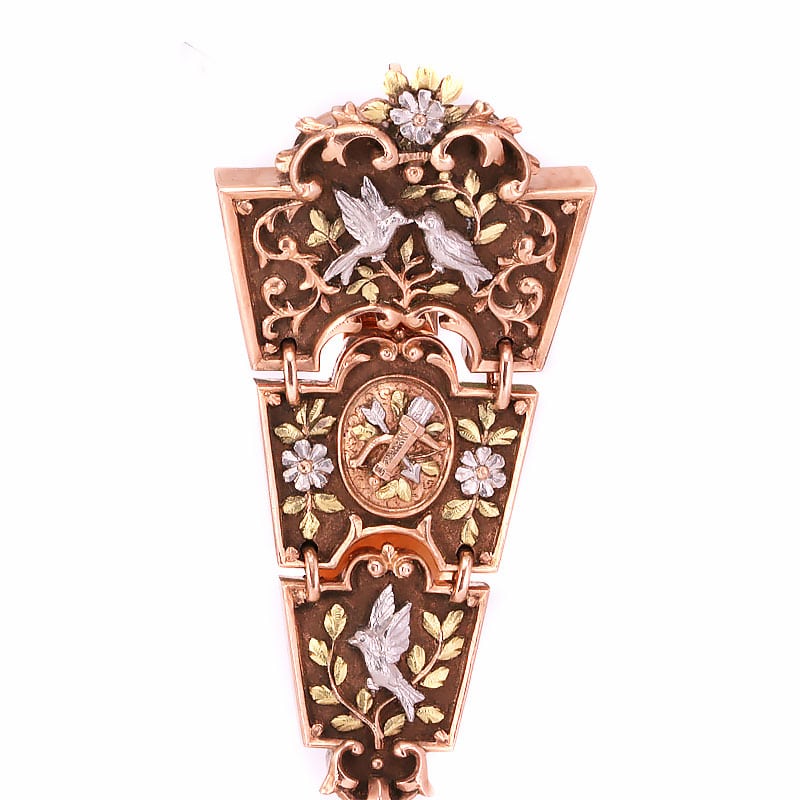
Torch of Love:
The case of the pocket watch is designed with a torch of love crossed with a bow and quiver full of arrows. The panels of the chatelaine features another bow and quiver and courting doves. The symbolism used throughout art during this period often reflected either worldly or religious belief. The hymeneal torch is a reference to the God of Hymenaeus, the Greek and Roman god of marriage, who is often depicted holding a lit torch. The torch came to represent life, particularly when depicted with doves or courting birds (Source 3). The symbolism of broken or upside-down torches has also been used across funerary art of the time, to represent a life cut short. References can also be observed in literature of the time; the line in William Blake's poem To The Evening Star published in 1783, reads 'thy bright torch of love; thy radiant crown' (Source 4). A modern idiom for the sentiment is the reference to carry a torch for someone, in reference to holding romantic feelings for a person.
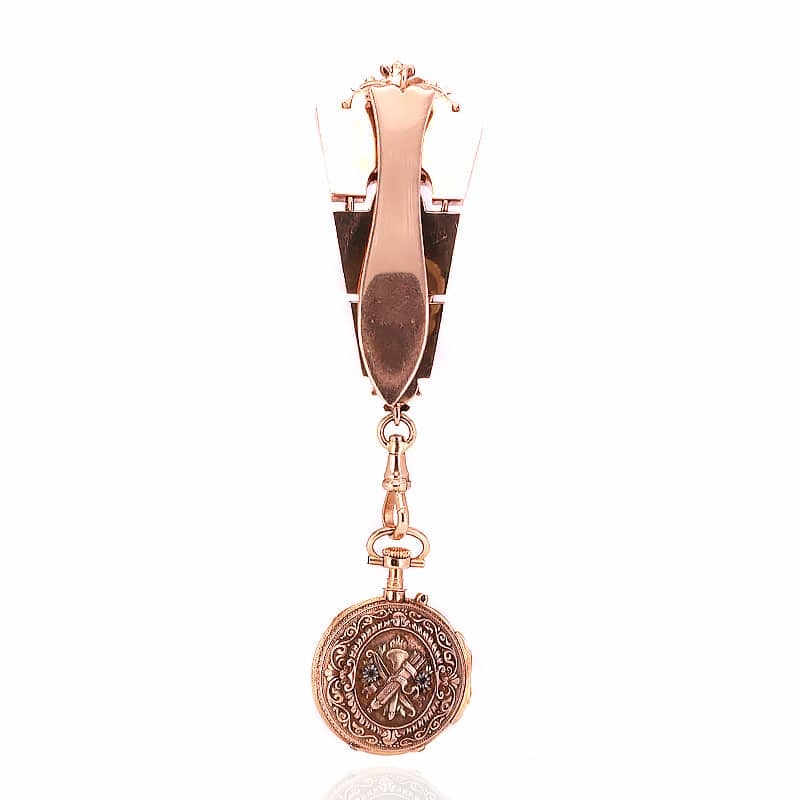
Bow and Quiver:
The torch of love when crossed with a bow and quiver full of arrows takes on another layered meaning. The bow and quiver are also a reference from Greek and Roman culture as it was used in art to represent, Cupid or Eros, the gods of love. When depicted separately they can represent the beginning of love, as the arrow is Cupid's instigator. However, in the context of many arrows depicted in a quiver, the reference is for the wish of many children. This reference is of biblical origins from psalm 127:3-5.
'Behold, children are a heritage from the Lord, the fruit of the womb is a reward.
Like arrows in the hand of warrior, so are the children of one's youth.
Happy is the man who has his quiver full of them; they shall not be ashamed but shall speak with their enemies in the gate'.
Doves:
Courting or paired doves have long been a symbol of marriage and are an early Christian iconography. The inclusion of doves in this piece makes clear the designer's messaging. The torch of love, bow and quiver and courting doves read as a message of a happy life filled with marriage and children. This piece could have been gifted to a lady as a wedding present or as a highly romantic gesture by a suitor.
The symbolism used throughout the decoration of this piece is a fantastic example of the sentimentalism that swept through French and British culture from the late 18th century through to the late 19th century. The height of this period is referenced as the Romantic Period (1837-1860) however these sentiments experienced continued popularity right up until the death of Queen Victoria in 1901.
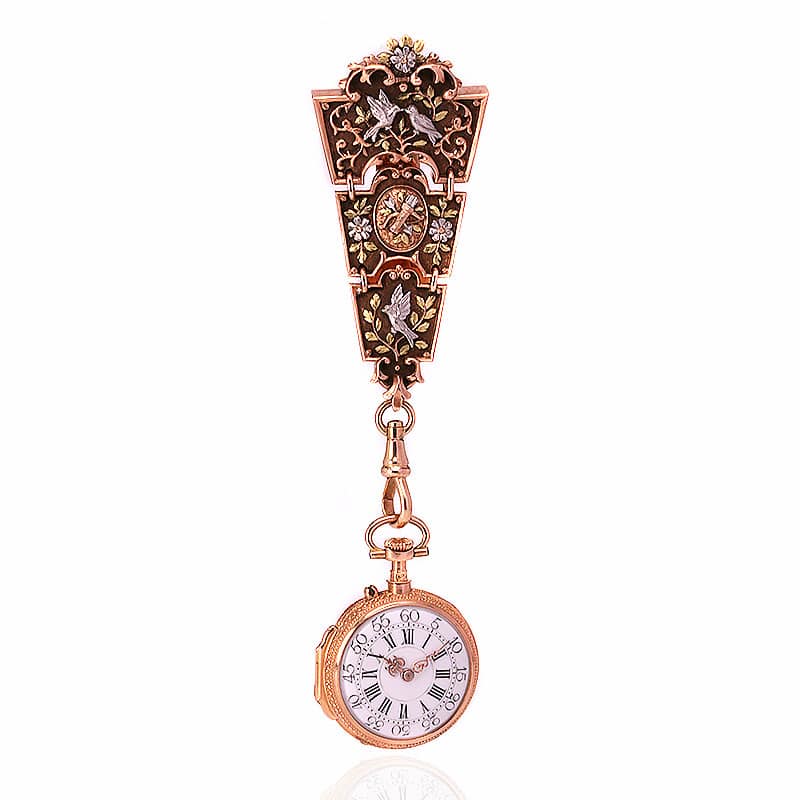
The Pocket Watch
The stem wind pin-set technology of the pocket watch helps to date the piece. The invention of the stem wind pocket watch eliminated the need for the key wind. "The first stem-wind and stem-set pocket watches were sold during the Great Exhibition in London in 1851 and the first owners of these new kinds of watches were Queen Victoria and Prince Albert" (Source 5). The invention of the stem wind is credited to Adrien Philippe in 1842 with the first commercial models being produced by Patek Philippe & Co (Source 5). The history of this horological technology dates the pocket watch to the second half of the Victorian era.
This is further supported by the use of green gold in the adornment of the watch case and chatelaine. "Green gold was produced sporadically during the 1800's and mostly in the late 1800's by adding silver as well as cadmium, however the major drawback with cadmium is that it releases toxic fumes when being melted, a problem that was not really known to the jewellers of this period. Due to the danger associated with producing green gold, it only made a very brief appearance in the history of jewellery, however it coincided with a wonderful style at the time which suited its use so well, the Art Nouveau period of the late 1800's to early 1900's" (Source 6). The technology evident in the pocket watch and the use of green gold suggests that the piece dates to the late Victorian to early Edwardian era.
This pocket watch and chatelaine is a great example of how sentiments of the Romantic movement continued to influence jewellery throughout the Victorian era. The technology and materials used within the construction of the piece indicates when the item was made, whilst the imagery used can be decoded to reveal the sentiment behind the piece. This item is currently on display at Kalmar Antiques as part of The Kalmar Vault Collection.
Sources:
- Cummins, Genevieve 2010. 'How the watch was worn: a fashion for 500 years', Antique Collectors' Club; page 21.
- Phillips, Clare 2019. 'Jewels & jewellery', Thames & Hudson: Victoria & Albert Museum, London.
- Peters, Hayden 2024. 'Symbolism, the arrow and quiver', The Art of Mourning. Accessed 6th March 2024; Symbolism, The Arrow and Quiver - Art of Mourning
- Blake, William 1783. 'To The Evening Star', reprinted by English Poems: Edward Chauncey Baldwin. New York: American Book Company, 1908.
- Antique Karen 2024. 'Pocket watch histories'. Accessed 6th March 2024; Antique Karen - Pocket Watch Histories
- Kalmar, Damien 2014. 'An article on green gold', Kalmar Antiques. Accessed 6th March 2024; An article on green gold - Kalmar Antiques

